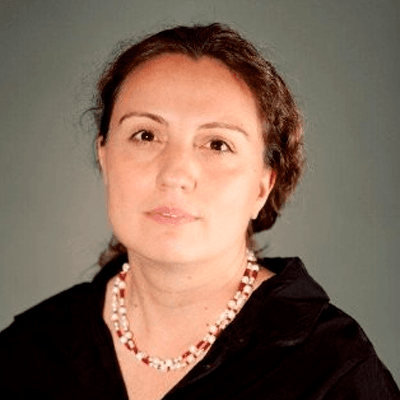 By Sibel Selcuk
By Sibel SelcukVice President, Global Research & Development and Strategy
Monument Chemical
As a young girl, I knew two things for sure. When I grew up, I would be a scientist. And I loved to cook. And so, throughout my career, as I became a more‐experienced scientist and an ever‐better cook, I have relied on cooking analogies to explain my work.
My two passions have a lot in common. Scientific formulas are, fundamentally, recipes. In kitchens, as in laboratories, we heat and freeze. We combine ingredients. We experiment. And if we don’t get the results we are looking for, we try again. So, while not everyone can relate to scientific terminology, cooking analogies have a way of resonating with just about everyone.
Which brings me to the concept of agility, the ability to operate with efficiency and speed. My grandma and mother were masters of what often seemed chaotic, but ultimately successful, improvisation. They were agile cooks. And their results consistently amazed me.
At Monument Chemical, we strive to be agile scientists who work quickly, efficiently — and successfully — on behalf of our customers.
Here’s how we do that:
We know our customers
A smart cook knows the preferences and tastes of who will be at the table. Vegetarian or carnivore? Spice lover or less adventurous?
At Monument, we align what we do with what our customers want. Achieving that alignment requires us to be agile enough to consider challenges and opportunities from our customer’s perspective. We can’t just cook up what we want in our laboratory — we must prepare what our customers want.
Agility starts with alignment with your customer’s needs!
We know that simple is good
One of the first things I learned in the kitchen was to keep things as simple as possible. A large, complicated recipe becomes much less daunting once you break it into its component parts. It’s the same in business. You may feel overwhelmed by a seemingly huge challenge, but if you are
agile enough to slice and dice it into several more‐manageable pieces, you are well on your way to success. Some of the smaller pieces will likely be ones you already know how to solve. Others will require more investigation, more input, more work. But you will be making progress as you move through these smaller chunks of work. You are on your way to achieving what at first struck you as impossible.
To be as agile as possible, keep things as simple as possible!
We understand that velocity > speed
In physics class, one of the first things we learned is the difference between velocity and speed: That velocity is a vector quantity, which means it is “direction aware.” Speed is, well, just speed.
And, to continue with our metaphor: It’s called “fast food” for a reason. Your burger and fries might be tasty, filling, or even (somewhat) nutritious — but you will get them quickly.
In business, as in food, speed can be a very good thing. But if you are rushing in the wrong direction (i.e., have the wrong velocity), going fast can be very dangerous.
Scientists and engineers are never short of ideas. But successful scientists and engineers are those that consistently identify and champion high‐potential, high‐ value ideas aligned with business strategy. These are the projects that generate velocity — speed in the right direction.
Being agile doesn’t necessarily mean being fast!
We expect the unexpected
If you were to glimpse me in my kitchen, you might catch me doing something I saw my grandma and my mother do very often: staring intently into the refrigerator. They were confident (a confidence I try to emulate) that within an hour or so, they could turn whatever they found into a wonderful meal.
The ability to improvise — to get positive results out of unexpected inputs — is a key ingredient in cooking and in business. And it’s a hallmark of agility.
A lot can change in the lifetime of a project, for instance, as the world knows, a global pandemic could cause market volatility and supply chain failure. We must be ready for anything.
Two key components of agility — flexibility, which is the ability to respond to changing needs, and elasticity, which is knowing how to bounce back and reposition — ensure we are always ready for what’s next.
Flexibility + Elasticity = Agility!
We are not afraid to try something new
Good cooks and successful scientists are adventurers at heart. Whether we are facing a recipe we’ve never attempted before or a daunting technical challenge, we are inclined to give it a go.
Having that attitude — “yes, I can do this!” — is a wonderful, and necessary, attribute of agility.
Although our “core cooking competencies” might not include, say, preparing a complicated international dish, we understand that, on a fundamental level, cooking is cooking. It comes down to the right application of “salt, fat, acid, heat,” as Samin Nosrat put it in her book of that name (a title that cook/scientists can easily relate to!).
All scientists have strengths and weaknesses, competencies that are more familiar, and thus some projects that are more comfortable to work on than others. But agile scientists, which we are known for being at Monument, are not afraid of new challenges. We understand that science is science, and we are willing to take on a challenge that does not necessarily test a core competency or does not feel like a natural fit.
You need an open mind to create the most impactful innovations. Even if they don’t work, your learnings will influence your future projects.
Be open to new challenges!
We are innovators
Innovation is a popular buzzword, with multiple definitions. To me, an innovative company is one that continuously makes new ideas real.
And that’s what good cooks and successful scientists try to do, day in and day out. We are constantly striving to innovate.
Of course, an idea that is new to us doesn’t necessarily mean it is new to the world. In business, innovation can mean a technology improvement, a process change, or adopting new technology or chemistry in production.
In both the kitchen and the laboratory, we must always be trying new combinations, approaches, recipes, and formulas. That’s how we keep learning, growing, and succeeding. That’s how we innovate.
Agile cooks, scientists – and businesses – never stop innovating!
Best wishes for success in your laboratory and your kitchen. Bon appétit!
Sibel Selcuk, PhD., is the Vice President of R&D and Strategy for Monument Chemical. Dr. Selcuk’s passion and expertise is taking a challenge and converting it into an opportunity through innovation, identification of gaps and bringing ideas together to solve it. She has a demonstrated track record with research and development, startups and international business, leading successful transformational initiatives and executing M&A transactions. She has had exposure to multiple industries including specialty chemicals, polymers, environmental and waste management, construction materials and sustainability.



Recent Comments